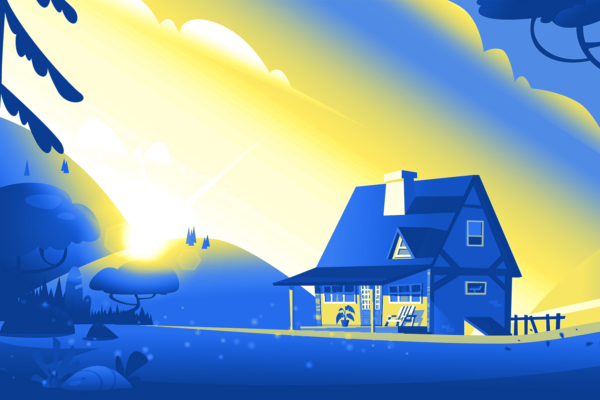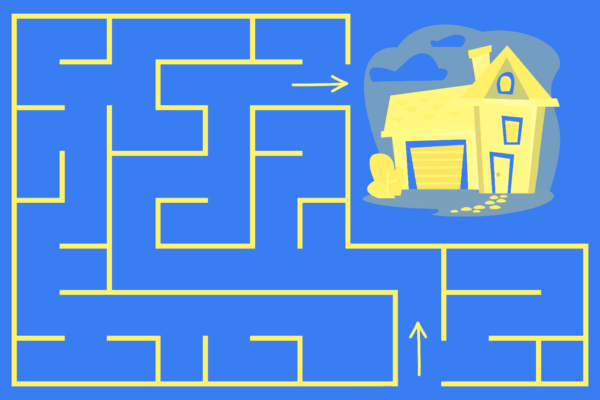
Why Did Lumber Prices Go Up?

If you keep an eye on lumber prices, you may have noticed that they fluctuate (and sometimes by a significant amount) over time. Prices in this industry are influenced by a number of factors, some of which may be a little surprising.
In this article, we’ll break down the reasons why lumber prices fluctuate, why they skyrocketed in 2021, and what all of this means for those wanting to take on a home project or build a new house altogether.
Why do lumber prices fluctuate?
Every year, several things play into the rise and fall of lumber prices. Production capabilities, demand, production disruptions, and disruptions in adjacent industries are a few of the major factors.
Production Capabilities and Demand
One of the biggest reasons why lumber prices fluctuate is because sawmills simply cannot keep up with large spikes in demand. Unlike other industries that can quickly ramp up production as needed, building a new sawmill can take months and millions of dollars. For many companies, short bursts of high demand do not justify this investment.
Lumber demand is most closely linked to the housing market. When there is a housing boom, more houses are built, and in turn, more lumber is needed.
Following the basic principles of economics, if supply remains constant and demand rises, prices will rise. If supply falls while demand simultaneously increases, prices will rise even more. Conversely, you can expect lumber prices to fall when supply increases or demand decreases.
Looking for a home improvement loan?
As lumber prices cool down, it’s time to start those projects again!
Supply and Production Disruptions
The lumber industry is no stranger to events that disrupt supply and production. Lumber prices can vary when there are changes in the supply of raw materials or milled lumber, which may be fueled by:
- Weather: Seasonal weather conditions such as heavy rains or snow can slow harvesting, production, and distribution.
- Natural disasters: Catastrophic natural disasters like wildfires in the West and hurricanes in the South can deplete supplies within a matter of hours.
- Pests: Though they’re small, mountain pine beetles can inflict major damage to forests. In years of beetle epidemics, entire forests may be totally destroyed.
- Labor shortages: Labor shortages translate to fewer workers to harvest timber and operate sawmills, which bottlenecks production.
In years where forests and the lumber industry are hit particularly hard by these factors, you can expect an increase in prices.
Disruptions in Adjacent Industries
What’s happening in the forests and sawmills isn’t the only thing that can wreak havoc on lumber prices. Disruptions in related industries can also directly affect lumber supplies.
For instance, a shortage of truckers can make it hard for lumber companies to distribute their products. Problems in petrochemical industries translate to glue and resin shortages, which are essential for plywood construction. When lumber manufacturers have to pay more to make the product, consumers pay more in the checkout line.
Trade Disputes and Tariffs
Not all lumber comes from the United States. In fact, the U.S. imports approximately $4.5 billion worth of softwood lumber from Canada annually. Tariffs on these goods are often passed along to consumers in the form of higher product prices. During trade wars and tariff hikes, you can expect the price of lumber to rise.
Why did lumber prices go up in 2021?
At the end of 2020 and first half of 2021, people around the country watched lumber prices skyrocket. It was the perfect storm of several factors we mentioned above.
The COVID-19 pandemic left many people stuck at home for months. With more time— and money that was set aside for things like vacation and entertainment— on their hands, people turned to home projects, remodels, and building new homes altogether. This meant that the demand for lumber increased significantly.
Supply, on the other hand, was taking a big hit. Because of the pandemic, sawmills and forestry companies were facing labor shortages. Anticipating a drop in demand due to the pandemic, sawmills—which cut round logs into the square pieces of lumber that you can get at a hardware store— temporarily closed. Others slowed or halted production due to lockdowns. And even though raw timber prices didn’t fluctuate that much, the mills simply could not keep up with the demand.
The winter storm in February 2021 also disrupted petrochemical productions in Texas, which slowed the production of plywood products.
The result of this combination was record-breaking prices. In just one year, Americans saw a 250% price increase in lumber prices. Lumber retailers were selling boards that once cost between $8-$10 for a whopping $40 apiece.
How do lumber prices affect home building and remodeling projects?
You may not give too much thought to lumber prices, but if you’re planning on building a home or taking on a home improvement project, it’s something you’ll want to keep in mind. That’s because most homes these days are made from milled lumber and those costs will be passed down to you as the homebuyer. Similarly, many home renovation projects involve wood, whether you’re building a deck, adding an additional room, or constructing a treehouse for the kids in the backyard. Lumber prices can mean paying (or saving) thousands of dollars more.
In fact, for individuals and families building single-family homes, the 2021 increase in lumber costs translated to an average cost increase of nearly $30,000 for one home, according to the National Association of Home Builders.
Before you start on a home improvement project or building a new home, check in on lumber prices. If you do and see that they are well above average, consider waiting a few more months.
Holding Out for Lower Prices
On the bright side, most price hikes don’t last forever. If you’re planning on doing a major renovation that requires a lot of lumber or if you want to build a new home, waiting until lumber prices are on a downward trend can save you thousands. By keeping the things in mind that lead to price fluctuations, you can better prepare for projects and hold out a little longer if lower prices are on the horizon.
Apply to Finance Your Project
Amplify has home improvement and home equity loans. Apply today!



